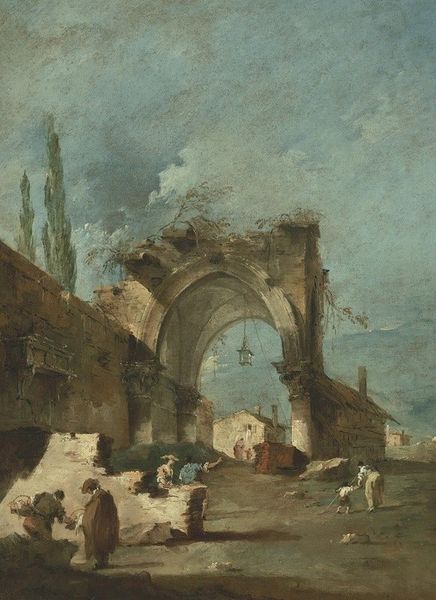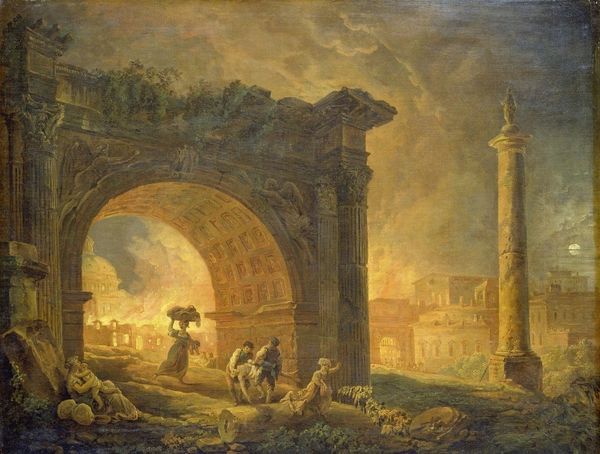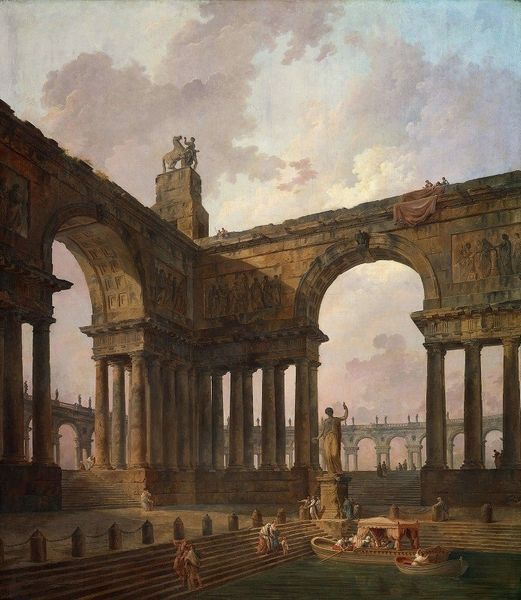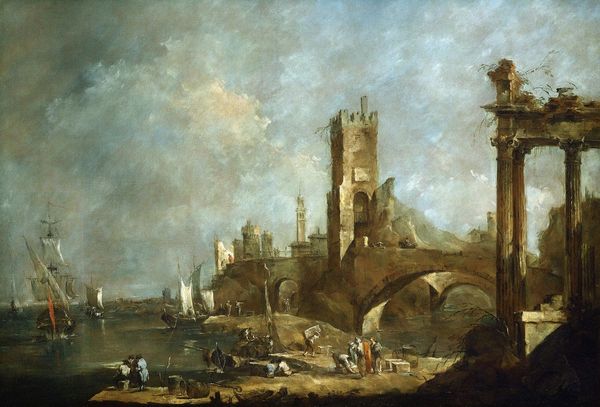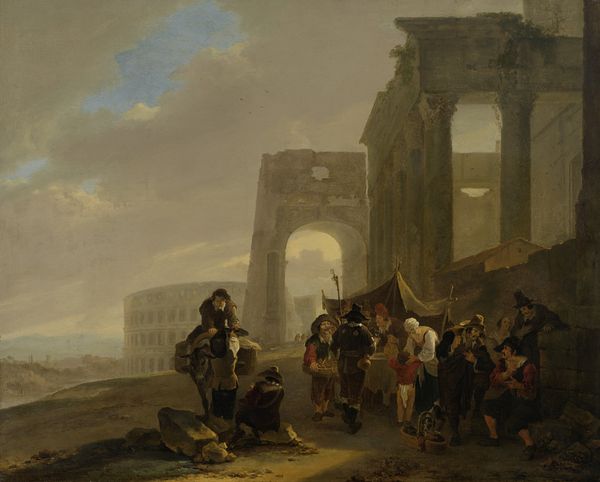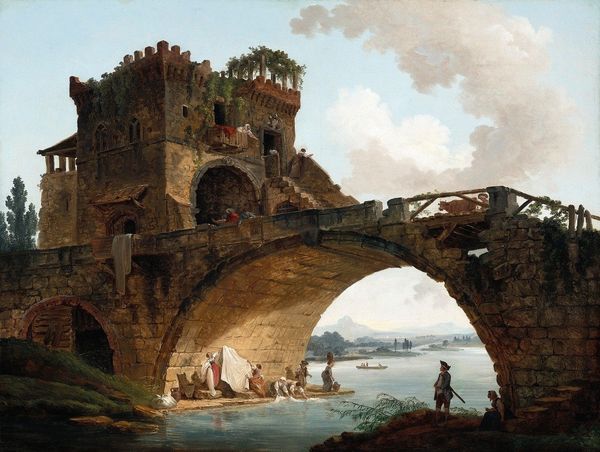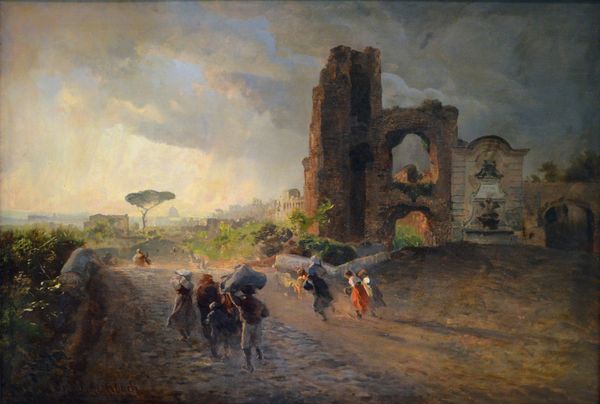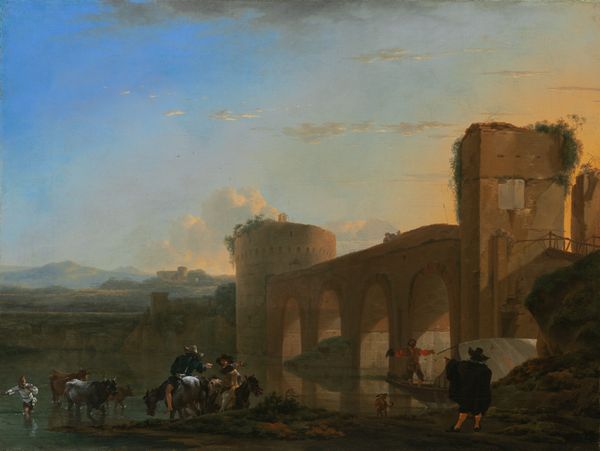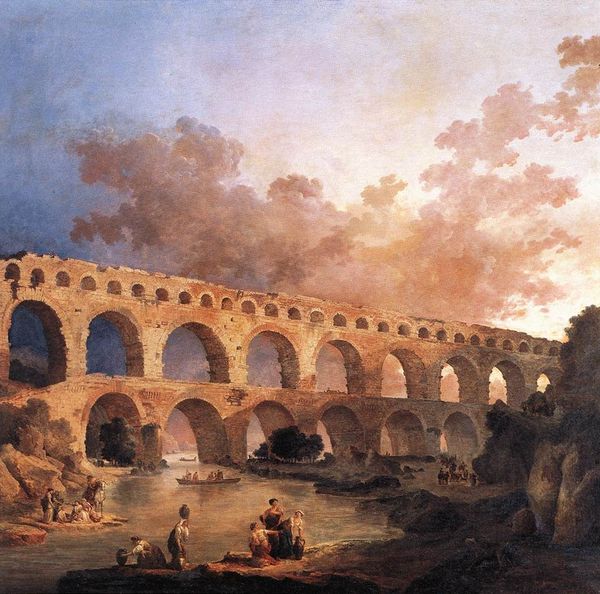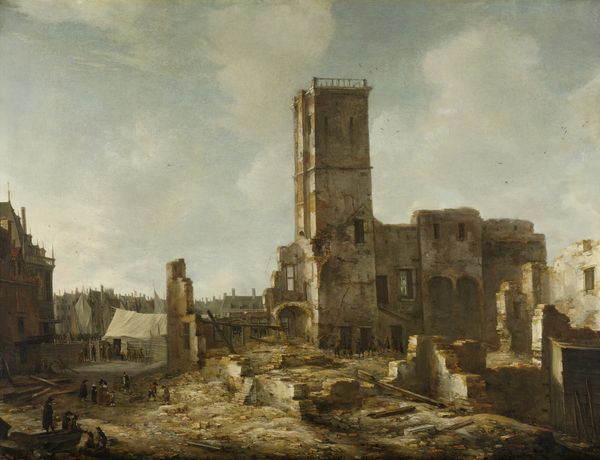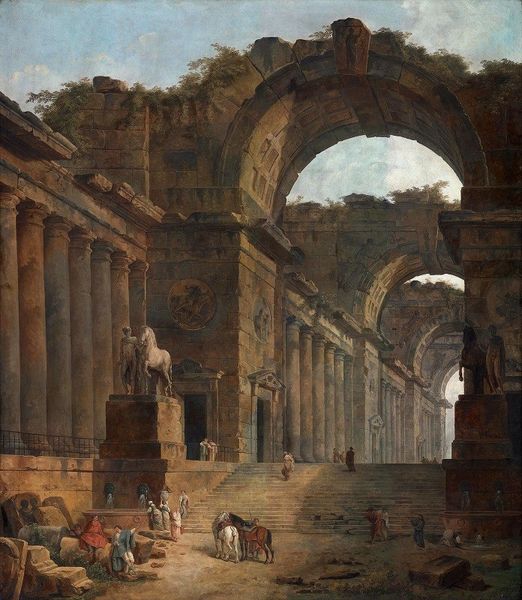
Copyright: Public Domain: Artvee
Curator: Here we have Hubert Robert’s "The Old Bridge," created around 1760. It’s an oil painting, quite evocative in its play of light and shadow. Editor: Yes, immediately, there’s this... gloominess, isn't it? It's monumental but heavy, almost oppressive. You feel the weight of the stone. Curator: Precisely. The painting excels in depicting the monumental architecture; note how the arched structure dominates the composition, its repeated forms creating a sense of depth and echoing the past. Consider also the structural integrity emphasized by the solid lines. Editor: The texture looks incredible; I wonder what Robert’s layering technique was like to achieve such a crumbling, aged effect. It appears more as an act of building rather than just image-making. One imagines the work involved with transporting all of those huge pieces of stone and raising them up there, and it creates that emotional reaction within you. Curator: He clearly drew inspiration from the baroque period. This sense of grandeur, this interest in theatricality. I can see a lineage in the art of architectural capriccio, these imagined and fantastical spaces, yet it still leans into the aesthetics of Romanticism through its ruinous charm. Editor: Looking at the clothing and placement of the workers, how were labor and resources allocated? Were slaves being forced into labor or how would they even be financially compensating these people? What are the implications when the laborers, tools and materials all contribute towards the piece. Curator: That’s fascinating. I'm looking again at the texture of the stone itself and how he handled the paint, and it almost gives it this narrative quality. Editor: And to further expand on that, maybe Hubert Robert had seen something similar during a visit to Rome which is what inspired him to replicate this architectural scene on a grand scale in his painting and capture that historic preservation from a cultural and socioeconomic status. Curator: Your contextual reading adds such depth! It alters the formal aspects by association; a compelling synthesis to contemplate. Editor: And now when viewing the painting one begins to perceive it less with emotional feelings and start imagining about labor and tools used, and this is the true meaning of interpreting this artwork!
Comments
No comments
Be the first to comment and join the conversation on the ultimate creative platform.
